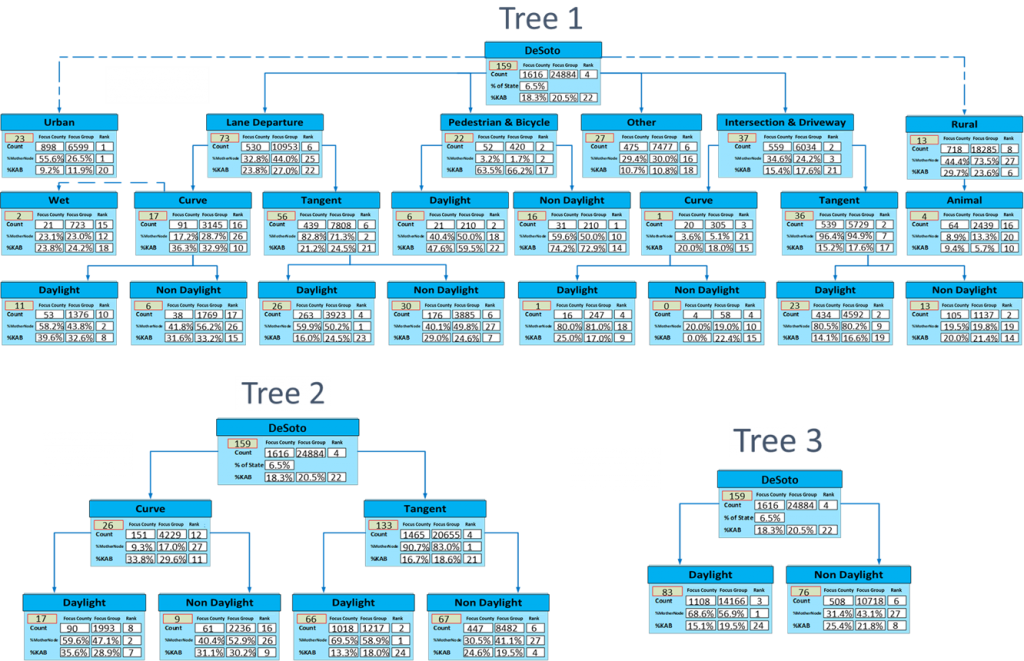As a part of the systemic analysis, crash trees were developed to further visualize crash types and conditions in transportation networks. Crash trees have been adopted by agencies to identify the focus facility types and crash types. For most organizations and departments of transportation (DOTs), the concept behind developing a crash tree is a stepwise elimination process where the higher value in the crash tree is retained and the rest of the branch is eliminated. TSC developed a set of Cross-comparison Crash Trees that not only compares the raw counts from the crash data but also compares focus county’s crash percentage and ranking to other similar counties or jurisdictions. This approach assists the decision-makers in understanding the intensity of overrepresentation. The crash tree includes data from 27 small rural counties in Florida.
